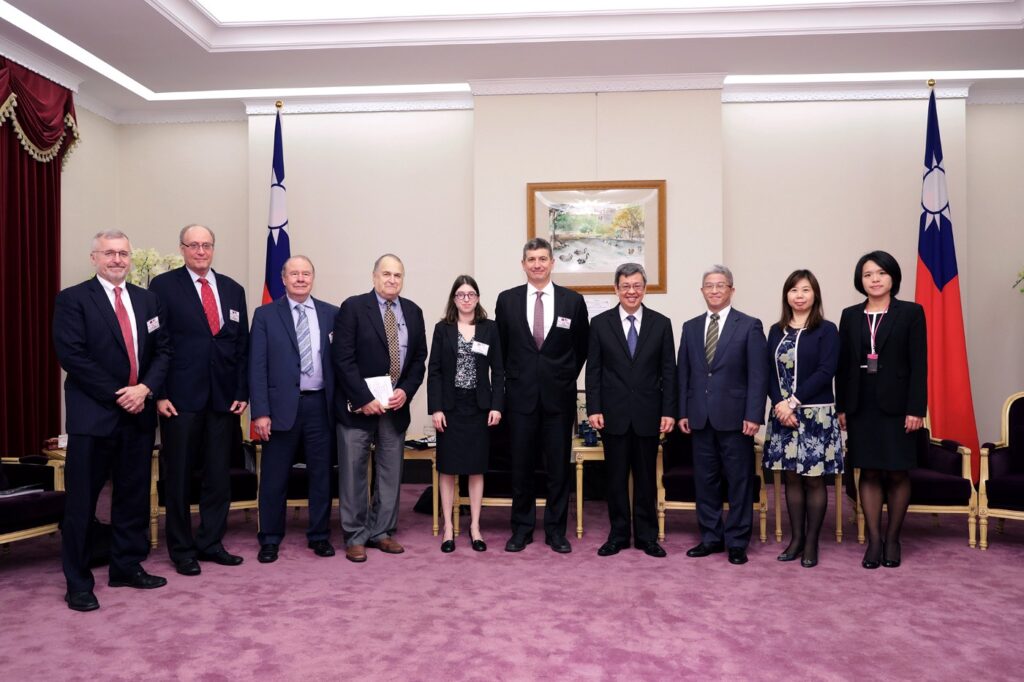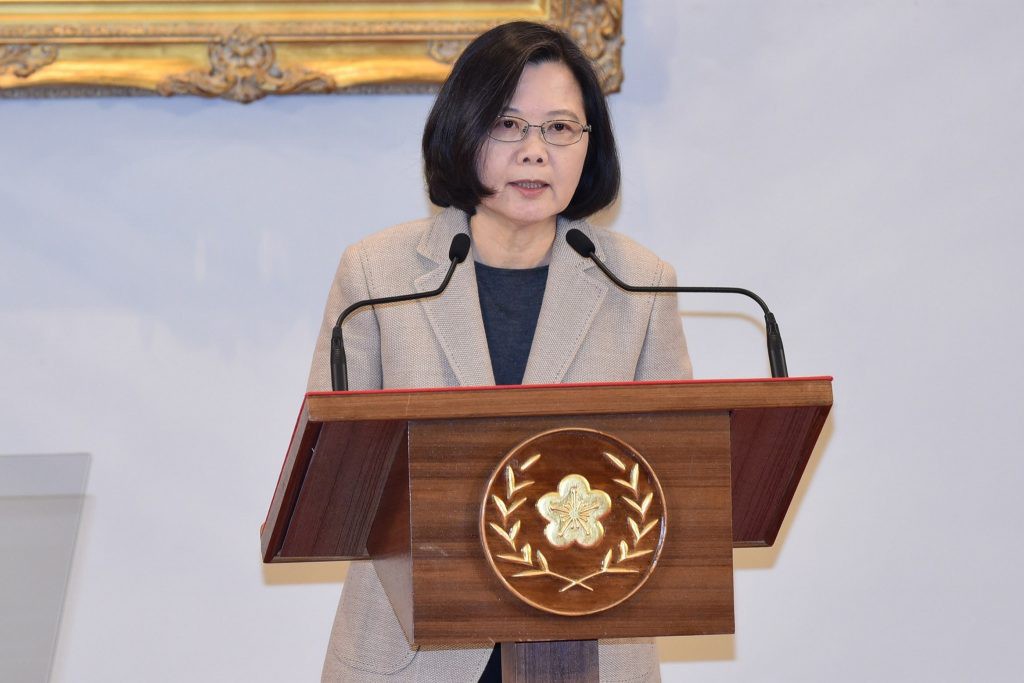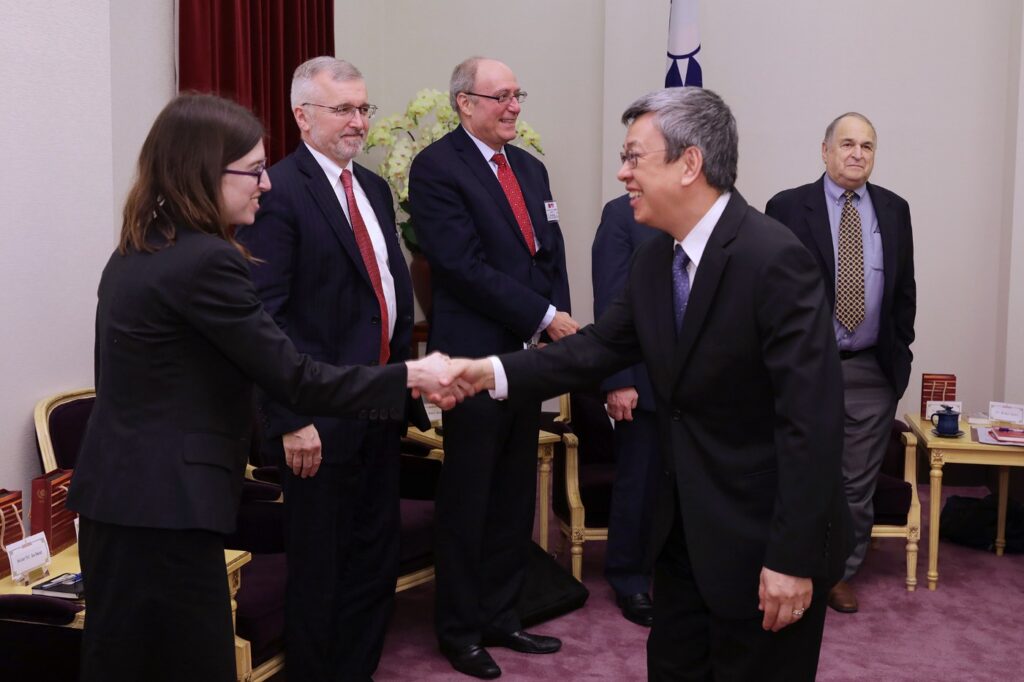Steven M. Goldstein 戈迪溫, Director of the Taiwan Studies Workshop at the Fairbank Center for Chinese Studies, Harvard University, reports on the Fairbank Center’s latest visit to Taiwan and the mainland in January 2019.

Members of the Taiwan Workshop at the Fairbank Center for Chinese Studies, Harvard University, have made annual visits to Taiwan and the Chinese mainland since the administration of Chen Shui-bian 陳水扁 (2000–2008). We have met with academics, think tank scholars and serving, as well as former, government officials to discuss cross-strait relations. This year a group from the workshop visited from January 7 to 17, with meetings in Taipei, Kaohsiung, Tainan and, on the mainland, in Beijing and Xiamen.
The Context
Our visit came at an interesting juncture in cross-strait relations. In November 2018, elections in Taiwan resulted in a stunning defeat for the ruling Democratic Progressive Party (DPP) in the county magistrate and mayoral elections, with the Kuomintang (KMT) winning fifteen of twenty-two seats for a gain of nine from the last local elections in 2014. It was a startling reversal of fortunes that begged explanation. Were the results indicative of a revival of the KMT? Or were they reflective of President Tsai Ing-wen’s 蔡英文 declining popularity? And if this was a factor, was it due to the domestic policy of her government or its policy toward the mainland?
In addition, by the time we arrived in Taiwan, 2019 had begun with two important speeches — one by Tsai Ing-wen on New Year’s day and the other a day later in which Xi Jinping 习近平 marked the 40th Anniversary of a message to “Taiwan Compatriots” that was originally issued after the normalization of Sino-American relations in 1979.

In her speech Tsai acknowledged that the recent elections were “a serious test for the current government,” but added:
“That the election results absolutely do not mean that grassroots public opinion in Taiwan favors abandoning our sovereignty, nor do they mean that the people want to make concessions regarding Taiwanese identity.”
She went on to caution against mainland interference in Taiwan and to reject the establishment of “passwords” (an obvious reference to the mainland insistence that cross-strait talks would not be resumed unless Taiwan recognized the “1992 Consensus”). However, Tsai seemed to codify Taiwan’s own requirements for progress in cross-strait negotiations: what she called the “four musts.” The mainland, she demanded
“must face the reality of the existence of the Republic of China (Taiwan); it must respect the commitment of the 23 million people of Taiwan to freedom and democracy; it must handle cross-strait differences peacefully, on a basis of equality; and it must be governments or government-authorized agencies that engage in negotiations.”
Tsai’s speech contained nothing new in her government’s position. However, the highlighting of sovereignty and identity as well as the assertion of the “four musts” reflected a stronger tone, perhaps prompted by a determination to demonstrate resolve after her party’s defeats two months earlier.
The occasion for Xi’s speech was quite different. It marked the anniversary of an initiative from the mainland that spoke of “peaceful unification” rather than “liberation” as the primary policy for resolving the conflict with Taiwan. As with Tsai’s speech, there were no new initiatives. However, the speech presented essential elements of the mainland position in either a different manner or with greater emphasis than previously. For example, the “1992 Consensus,” which had earlier made cross-strait negotiations possible due to its loose definition by each side, was explicitly linked in Xi’s speech to acceptance of the mainland’s “one China principle” that claims Taiwan was a part of China with the ultimate goal of reunification. Finally, the speech highlighted “one country, two systems” as the formula for unification with the suggestion that the specific form of unification with Taiwan would be the result of “democratic consultations” across the strait. Finally, as before, Xi linked Taiwan’s return to China with the realization of his trademark vision of the “great rejuvenation of the Chinese nation.”
Our meetings in Taiwan and on the mainland were by dominated by analyses of these two speeches and their possible influence on the future trajectory of cross-strait relations.
Taiwan
As our discussions on Taiwan progressed, it became apparent that Xi’s speech had struck a raw nerve. The tone and substance of the reaction on the island was set by Tsai’s New Years speech (which was published before Xi’s speech) and in her statement an hour after Xi’s speech. She rejected the “1992 Consensus” outright as a basis for discussion, arguing that in Xi’s speech it was associated with the two other unacceptable elements in the mainland’s stance on cross-strait relations: the “One China Principle” and “One Country, Two Systems.” Repeating the “four musts” she, once again, asserted that results of the November “elections absolutely do not mean that grassroots public opinion in Taiwan favors abandoning our sovereignty, nor do they mean that the people want to make concessions regarding Taiwanese identity.”

In practically all of our discussions on the island, our interlocutors followed Tsai’s lead in criticizing Xi’s depiction of the process and the end result by which the stalemate over cross-strait relations would be resolved. Most saw Xi’s speech as lessening the PRC’s flexibility on cross-strait relations and underestimating the strength of opposition to “One Country, Two Systems” in Taiwan in the wake of recent developments in Hong Kong.
It was, as one local commentator has written, seemingly “tone deaf” to the mood on the island.
Then what was the reasoning behind Xi’s speech? Some observers noted that while the election results on Taiwan or the developing tensions with the United States might have prompted Xi to take a more provocative and firmer stance on cross-strait relations, domestic politics (the anti-corruption campaign and economic slowdown) were also a factor — and, in the view of one interlocutor on Taiwan, the principal factor.
Regardless of the reasoning behind the speech, it was seen in Taipei as presaging a new tifa or formulation for policy toward Taiwan that shifted the orientation toward unification. It would be, one interlocutor argued, the formulation for his future Taiwan policy.
The general consensus regarding the impact on Taiwan politics was that Tsai had gained from the exchange while the position of the Kuomintang had been weakened. Her strong response Xi’s speech, which stressed Taiwan’s sovereignty and identity, had a dramatic impact on her popular support (which according to one set of polls rose from 18 percent to 48% after her exchanges with Xi). What seemed unusual to us was that it appeared that her New Year’s speech was responding to Xi’s speech, even though her speech was delivered the day before his talk. Asked about this apparent pre-emption, officials replied that mainland analysts in the ROC government had anticipated its orientation.
Ironically, most of our interlocutors believed that the Kuomintang, considered by the mainland to be the more-friendly party, had been politically damaged by the speech’s apparent equating of the “‘92 Consensus” with the incorporation of Taiwan into China. Throughout the Ma Ying-jeou 馬英九 presidency (2008–2016) and after, the KMT pursued its mainland policy based on a version of the consensus (never accepted, but not specifically rejected by the mainland) that included different interpretations of “one China” and thus made it possible to uphold the sovereignty of the Republic of China on Taiwan.
Xi’s speech appeared to have eliminated any such ambiguity and with it the core element in the KMT’s mainland policy. In our meeting with KMT Party officials, they disagreed with Xi’s interpretation of the “’92 Consensus” and argued that the party’s more flexible interpretation remained the best way to stabilize the cross-strait situation by making it clear they are not pursuing independence, while simultaneously balancing preservation of Taiwan’s identity with the economic gains of positive relations with the mainland. However, overall it was clear that Xi’s speech had for the moment at least put the KMT in a difficult position
This blow came soon after the victories in the recent local elections, and its significance was part of the broader question of the status of the KMT’s future prospects. Speaking generally, most of our interlocutors on Taiwan concurred with the prevailing view that the victories in the local election did not necessarily relate to Tsai’s mainland policy; have much predictive value in respect to the 2020 elections; or indicate the political strength of the KMT. We were told frequently that the results represented a DPP defeat, rather than a KMT victory.
The exception that proved this rule seemed to be the results of the mayoral elections in Kaohsiung 高雄市 where Han Kuo-yu 韓國瑜, the KMT candidate, was victorious, ending more than two decades of DPP rule. The overwhelming consensus of a number of local academics at National Sun Yat-sen University 國立中山大學 was that the DPP defeat was caused by a public perception that the party had taken its power in the city for granted, and had failed to promote the municipality’s interests.
In our meeting with Han Kuo-yu, it was apparent that he was seeking to build a political reputation on local economic success. He expressed little interest in the elections of 2020, or in the politics of cross-strait relations. Kaohsiung, he told us, was “an economic city not a political city” and he would avoid the politics of cross-strait relations in favor of developing beneficial economic relations with the mainland.
The Mainland
As one might expect, our interlocutors on the mainland did not see Xi’s speech as damaging to the KMT, nor as complicating cross-strait relations. Rather, it was presented to us as an indication of his distinctive contribution to the further development of Beijing’s policy toward Taiwan. If it was viewed negatively on Taiwan, one analyst noted “so be it;” there were other considerations behind the speech
Specifically, it was argued that Xi’s speech represented a response to a “new reality.” In part, one analyst told us, it was a signal to the people of the Chinese mainland of the continued commitment by the leadership to solve the Taiwan issue. It was also a response to the United States’s policy which, judging from the recently passed Taiwan Security Act, was seeking to bring back the alliance with Taiwan. It was also, another commentator told us, a reflection of the mainland’s growing strength.
However, we also heard that the new policy was an attempt by Xi to devise a new cross-strait policy. One unusually well-informed interlocutor, told us that the drafting of the speech began before the nine-in-one elections with the expectation that cross-strait relations would become more complicated. The previous approach of “peaceful development” leading toward unification had been taken by the United States as implying the acceptability of the indefinite preservation of the status quo of separation; it was therefore necessary to take a new approach of “raising high the flag of unification.”
This association of the speech with a new emphasis on peaceful unification was made by several interlocutors. However, it was stressed that this was not a threatening policy, but rather both a long term and peaceful approach. The former aspect was reflected in the association between bringing Taiwan back to China and the future “rejuvenation” of the Chinese people. The latter, by the commitment to a Taiwan-specific version of “one country, two systems” that would result from a process of democratic consultations between representatives of the two sides. One interlocutor made a point of emphasizing the fact that the speech mentioned such a specific version for Taiwan (as opposed to Hong Kong) because it was recognized that “one country, two systems” is unacceptable to both political parties in Taiwan.
However, the same analyst stressed that the long term and peaceful approach had to be balanced by statements that would deter independence by retaining the option of using force. However, even here we were told that Xi sought to balance this threat with his statement that force would be “targeting external interference and a very small number of ‘Taiwan independence’ separatists” and not all the people of Taiwan.
Concluding Thoughts
Assessing the impact on cross-strait relations of the conflicting statements issued by Tsai Ing-wen and Xi Jinping in January 2019 poses somewhat of a challenge. When the statements at the New Year were published, most analysts (including myself) concluded that there was nothing really new in the policy positions found in the documents. There appeared to be no signs of conciliation or greater hostility in either side’s stance. It seemed that, in the end, the statements pointed toward more of the same in the cross-strait stalemate that had developed soon after the election of Tsai Ing-wen in 2016.
Yet, it might be premature to draw such a conclusion. There were suggestions in our discussions that the recent exchanges might portend a significant change in the nature of cross-strait relations by bringing the most volatile and irreconcilable issue to the top of the agenda in an election year: conflicting claims to sovereignty.
This is, of course, not a new issue. Since the initiation of meaningful cross-strait negotiations in 1992, this has been the basic issue dividing the two sides. From the beginning, the Taiwan side insisted that as the Republic of China it was a sovereign, independent entity that was entitled to equal standing in negotiations with the mainland. The mainland, of course, rejected such a position. It considered the Republic of China to be a defeated political foe, occupying the sovereign territory of the People’s Republic of China and destined to be returned as a part of China.
At times since then there have been crises over the competing claims of sovereignty, such as the controversy over Lee Teng-hui’s 李登輝 claim of a “special state to state relationship” or Chen Shui-bian’s application to the United Nations. However, there have also been attempts to obscure or put aside the issue (such as with the “’92 Consensus”) in the interest of cross-strait stability that each side felt might provide progress toward a resolution of difficulties (such as during the first term of the Ma Ying-jeou administration).
What emerges from the New Year’s statements, as well as our discussions, is the sense that both sides have now placed the sovereignty issue at the center of their cross-strait policy. Tsai Ing-wen not only unequivocally rejected the constructed “’92 Consensus” as a solution to the conflict of sovereignties, but she also placed the DPP’s most potent domestic political appeals — commitment to island identity and sovereignty — at the center of her administration’s mainland policy, and as a requirement for cross-strait talks. Similarly, Xi Jinping’s focus on unification as the essence of the mainland’s Taiwan policy not only was a rejection of Hu Jintao’s 胡锦涛 gradualist policy of “peaceful development.” It was the affirmation of a policy that unambiguously established a future goal of mainland assumption of sovereignty over the island even as it rejected the existence of the present government by suggesting negotiations with representative delegations from the island as the way to create a future government for Taiwan.
It seems that after three years of uncertainty and probing, both sides have now become locked into starkly conflicting positions on what appears to be an fundamental, but irreconcilable question. This will be the environment in cross-strait relations during a time of uncertain Sino-American relations and the looming Taiwan elections of 2020.
Steven M. Goldstein 戈迪溫 is the Director the Taiwan Studies Workshop at the Fairbank Center for Chinese Studies, Harvard University.


